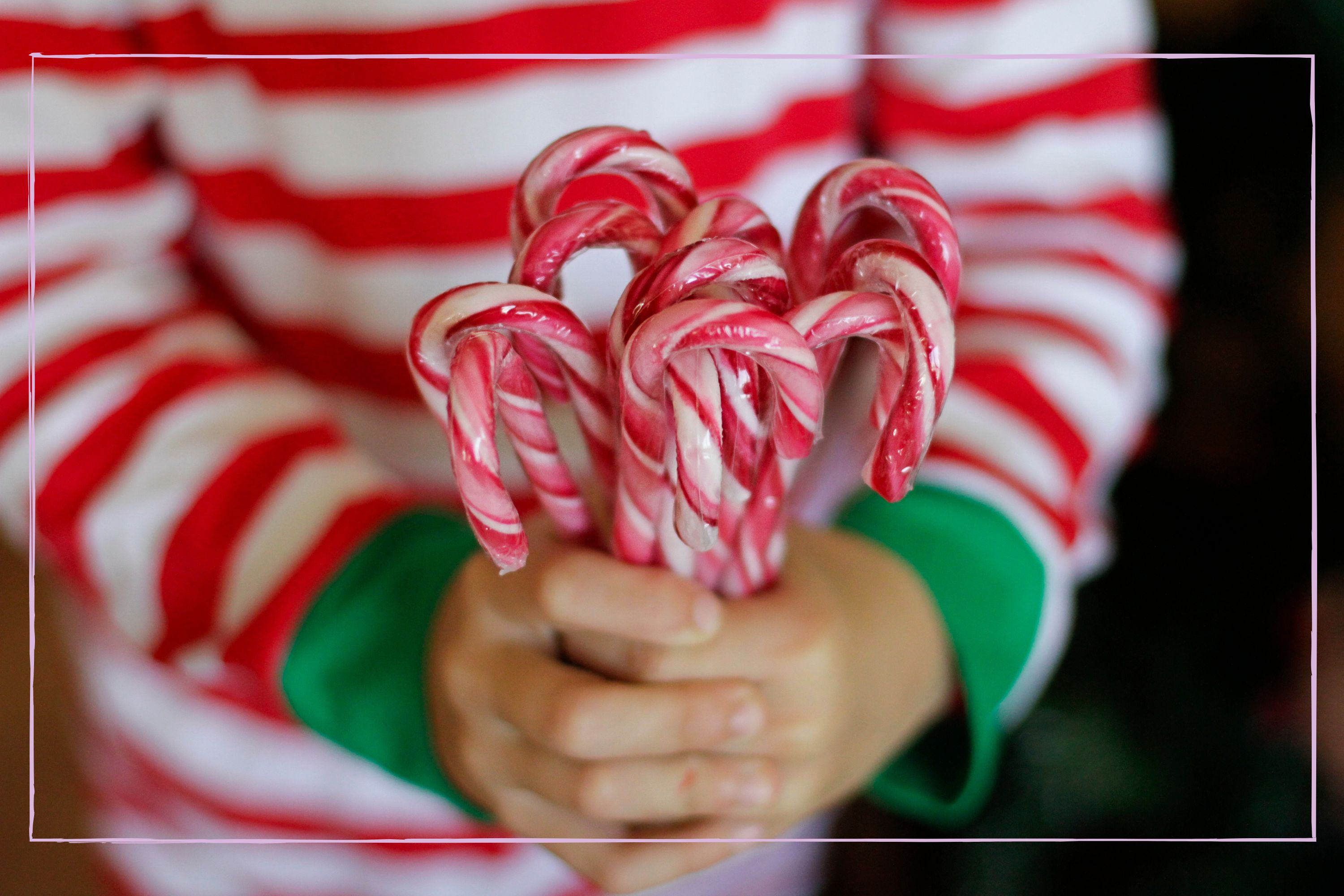What does the shape of a candy cane represent?
Do you know the meaning behind this popular Christmas treat?


There's no straightforward answer to 'what does the shape of a candy cane represent', but we've taken a look at some of the best theories.
As the festive period rolls around once again you might find yourself wondering about the origins of different Christmas traditions and folklore - from why do we have Christmas trees to how many reindeer does Santa have - but one festive custom that no one seems to have the answer to is where candy canes have come from.
The uniquely shaped red and white striped treats come out at Christmas time, and whether you like to hang them on your tree, put them in stockings or just eat them straight out of the packet, you've likely wondered at some point what exactly they represent. Well, here's everything we know...
What does the shape of a candy cane represent?
The most well-known story about the origin of the candy cane suggests that the shape represents a shepherd's crook, to remember the story of the shepherds who visited baby Jesus.
The story says that in 1670 the choirmaster at Germany's Cologne Cathedral wanted to give the children sitting through the service some sweets to keep them quiet. He decided upon sugar sticks but wanted them to be bent into the shape we now associate with candy canes. The choirmaster also wanted the candy canes to be white, to represent the purity of Christ.

However, historians agree that this story is just folklore, and many agree that it is unlikely that this is the true origin of the candy cane. What the shape of the candy cane represents is unknown, as there is no record of where they originated from.
A recipe for straight peppermint candy sticks, white with coloured stripes, was published in The Complete Confectioner, Pastry-Cook, and Baker, in 1844, but the earliest mention of a candy cane can be found in the short story "Tom Luther's Stockings", published in Ballou's Monthly Magazine in 1866. Following this, The Nursery monthly magazine mentions "candy-canes" in association with Christmas in 1874, and Babyland magazine describes "tall, twisted candy canes" being hung on a Christmas tree in 1882.
Parenting advice, hot topics, best buys and family finance tips delivered straight to your inbox.
What does an upside down candy cane mean?
Though there is no official meaning for an upside down candy cane, many believe it represents a 'J' for Jesus.
As well as the white representing the purity of Jesus, some sources claim that the red is intended to represent the blood of Jesus Christ, while the solidity of the candy represents the foundation of the Christian Church and the promises of God. However, there is no documentation to support these suggestions.
Why are candy canes associated with Christmas?
Aside from the folklore, the reason why candy canes are associated with Christmas remains unknown, though sources claim that candy canes have been hung on Christmas trees from as early as 1870, when a German-Swedish immigrant in Ohio named August Imgard turned candy canes into ornaments.
What we do know, however, is that in the 1920s Robert McCormack from Georgia began making candy canes for local children, later becoming one of the world's leading candy cane producers with 'Bob's Candies'. Initially, the canes had to be bent manually, but Bob's brother in law, Gregory Harding Keller, later invented the Keller Machine, which was able to bend and cut candy canes.
Video of the Week

Ellie is GoodtoKnow’s Family News Editor and covers all the latest trends in the parenting world - from relationship advice and baby names to wellbeing and self-care ideas for busy mums. Ellie is also an NCTJ-qualified journalist and has a distinction in MA Magazine Journalism from Nottingham Trent University and a first-class degree in Journalism from Cardiff University. Previously, Ellie has worked with BBC Good Food, The Big Issue, and the Nottingham Post, as well as freelancing as an arts and entertainment writer alongside her studies. When she’s not got her nose in a book, you’ll probably find Ellie jogging around her local park, indulging in an insta-worthy restaurant, or watching Netflix’s newest true crime documentary.